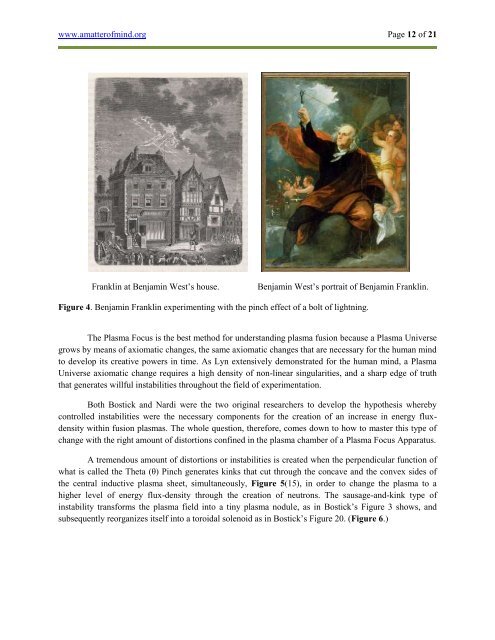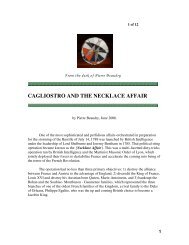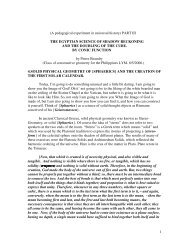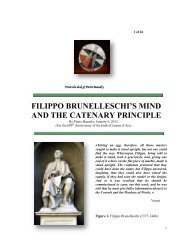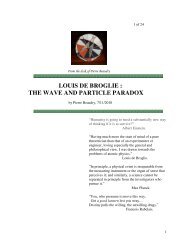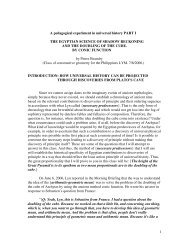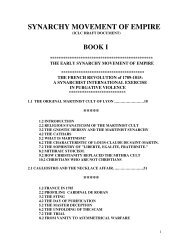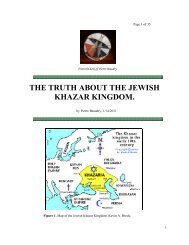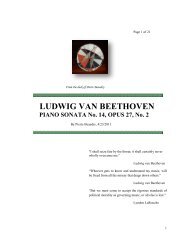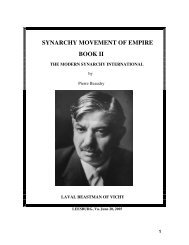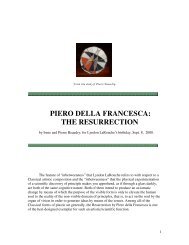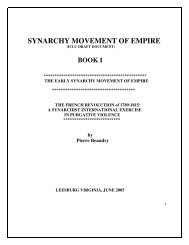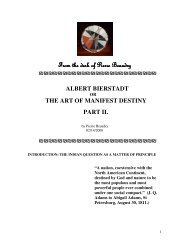THE PLASMA UNIVERSE IS A MATTER OF MIND
THE PLASMA UNIVERSE IS A MATTER OF MIND
THE PLASMA UNIVERSE IS A MATTER OF MIND
Create successful ePaper yourself
Turn your PDF publications into a flip-book with our unique Google optimized e-Paper software.
www.amatterofmind.org Page 12 of 21<br />
Franklin at Benjamin West’s house.<br />
Benjamin West’s portrait of Benjamin Franklin.<br />
Figure 4. Benjamin Franklin experimenting with the pinch effect of a bolt of lightning.<br />
The Plasma Focus is the best method for understanding plasma fusion because a Plasma Universe<br />
grows by means of axiomatic changes, the same axiomatic changes that are necessary for the human mind<br />
to develop its creative powers in time. As Lyn extensively demonstrated for the human mind, a Plasma<br />
Universe axiomatic change requires a high density of non-linear singularities, and a sharp edge of truth<br />
that generates willful instabilities throughout the field of experimentation.<br />
Both Bostick and Nardi were the two original researchers to develop the hypothesis whereby<br />
controlled instabilities were the necessary components for the creation of an increase in energy fluxdensity<br />
within fusion plasmas. The whole question, therefore, comes down to how to master this type of<br />
change with the right amount of distortions confined in the plasma chamber of a Plasma Focus Apparatus.<br />
A tremendous amount of distortions or instabilities is created when the perpendicular function of<br />
what is called the Theta (θ) Pinch generates kinks that cut through the concave and the convex sides of<br />
the central inductive plasma sheet, simultaneously, Figure 5(15), in order to change the plasma to a<br />
higher level of energy flux-density through the creation of neutrons. The sausage-and-kink type of<br />
instability transforms the plasma field into a tiny plasma nodule, as in Bostick’s Figure 3 shows, and<br />
subsequently reorganizes itself into a toroidal solenoid as in Bostick’s Figure 20. (Figure 6.)


